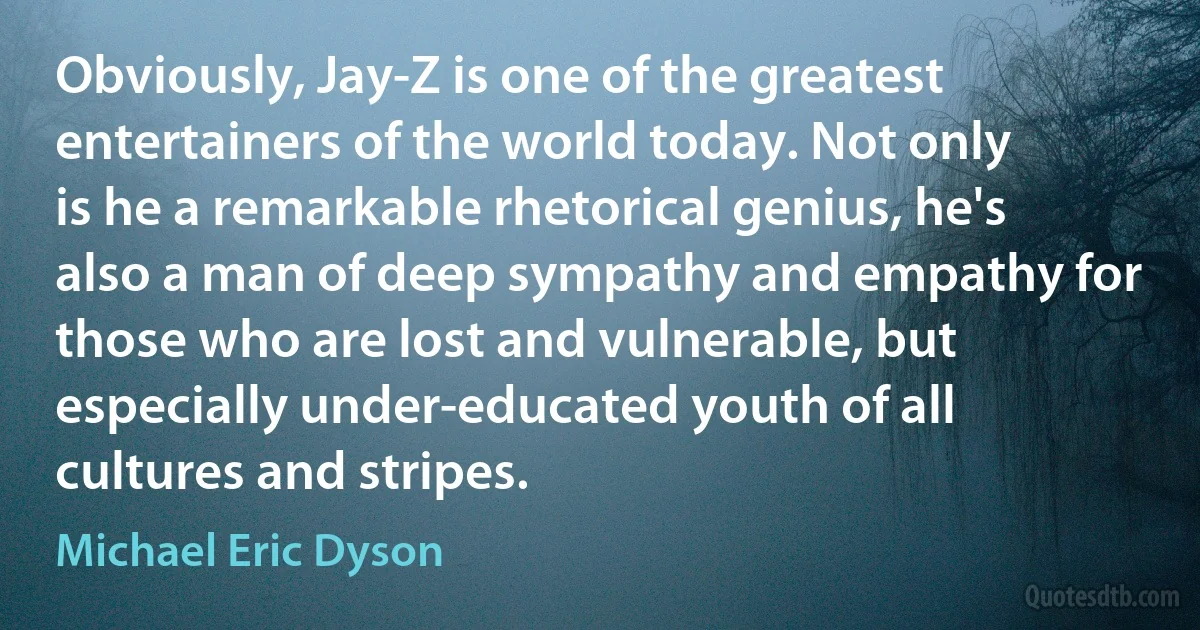Rhetorical Quotes - page 2
Chrétien is nothing if not versatile: popular, recherché, allusive, insistent, arch, naïve, racy and demure...He has a dramatist's flair for the handling of dialogue, a deft and economic way with characterization, the sharp confidence of the logician in his handling of rhetorical figures and the self-assurance of the entertainer in the deployment of humour (he is master of the verbal nudge). It is his essential vivacity that one misses most in his imitators.

Chrétien de Troyes
For Leopardi evil is integral to the way the world works; but when he talks of evil he does not mean any kind of malign agency of the sort that Gnostics imagined. Evil is the suffering that is built into the scheme of things. ‘What hope is there when evil is ordinary?' he asks. ‘I mean, in an order where evil is necessary?' These rhetorical questions show why Leopardi had no interest in projects of revolution and reform. No type of human action – least of all the harlequinade of politics – could fundamentally alter a world in which evil was ordinary.

John N. Gray
In order better to grasp the thought of Malthus, let us translate it into philosophical propositions by stripping it of its rhetorical gloss: -
"'"Individual liberty, and property, which is its expression, are economical data; equality and solidarity are not."
"Under this system, each one by himself, each one for himself: labor, like all merchandise, is subject to fluctuation: hence the risks of the proletariat."
"Whoever has neither income nor wages has no right to demand anything of others: his misfortune falls on his own head; in the game of fortune, luck has been against him."
From the point of view of political economy these propositions are irrefutable; and Malthus, who has formulated them with such alarming exactness, is secure against all reproach. From the point of view of the conditions of social science, these same propositions are radically false, and even contradictory.

Pierre-Joseph Proudhon
This ideography is a "formula language", that is, a lingua characterica, a language written with special symbols, "for pure thought", that is, free from rhetorical embellishments, "modeled upon that of arithmetic", that is, constructed from specific symbols that are manipulated according to definite rules.

Gottlob Frege
...to replace, as far as possible, works in the concrete conditions wherein they were written, spiritual conditions in part, that is to say, philosophical, rhetorical or poetic tradition, material conditions in part, that is to say, scholarly and social milieu, constraints stemming from the material support of writing, historical circumstances. Every work must be replaced in the praxis from which it emanates.

Pierre Hadot
Kuhn had the genius to find the words and sketch the concepts that made important old philosophical problems relevant to the public and newly discussable by philosophers. He had the strength of mind and commitment to lead the discussion. He could speak the truly incommensurable languages of physics, philosophy, and history, all necessary to frame and advance his epistemological quest. He wrote, as one of his admirers, Margaret Masterman, put it, in a "quasi-poetic style," sometimes veiled, sometimes with "rhetorical exaggeration," but always after careful and even painful thought. Or, to switch metaphors, he drew the portrait of science in the manner of the Impressionists. At a distance, where most viewers stand, the portrait appears illuminating, persuasive, and inspiring; close in, where historians and philosophers stare, it looks sketchy, puzzling, and richly challenging.

John L. Heilbron
The unnaturalness of mathematical symbolism is attested to by history. The algebra of the Egyptians, the Babylonians, the Greeks, the Hindus, and the Arabs was what is commonly called rhetorical algebra. ...on the whole they used ordinary rhetoric to describe their mathematical work. Symbolism is a relatively modern invention of the sixteenth and seventeenth centuries...

Morris Kline



